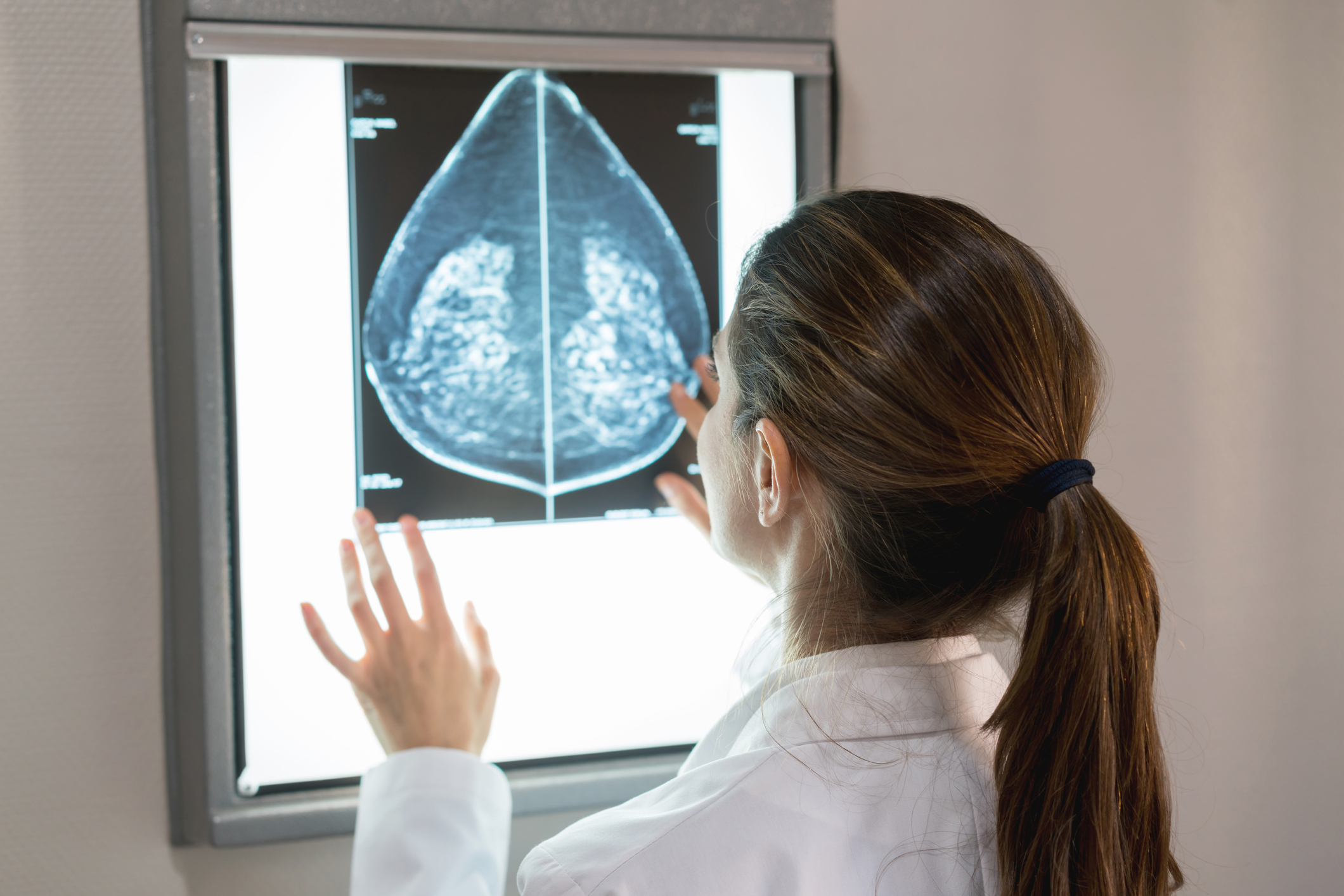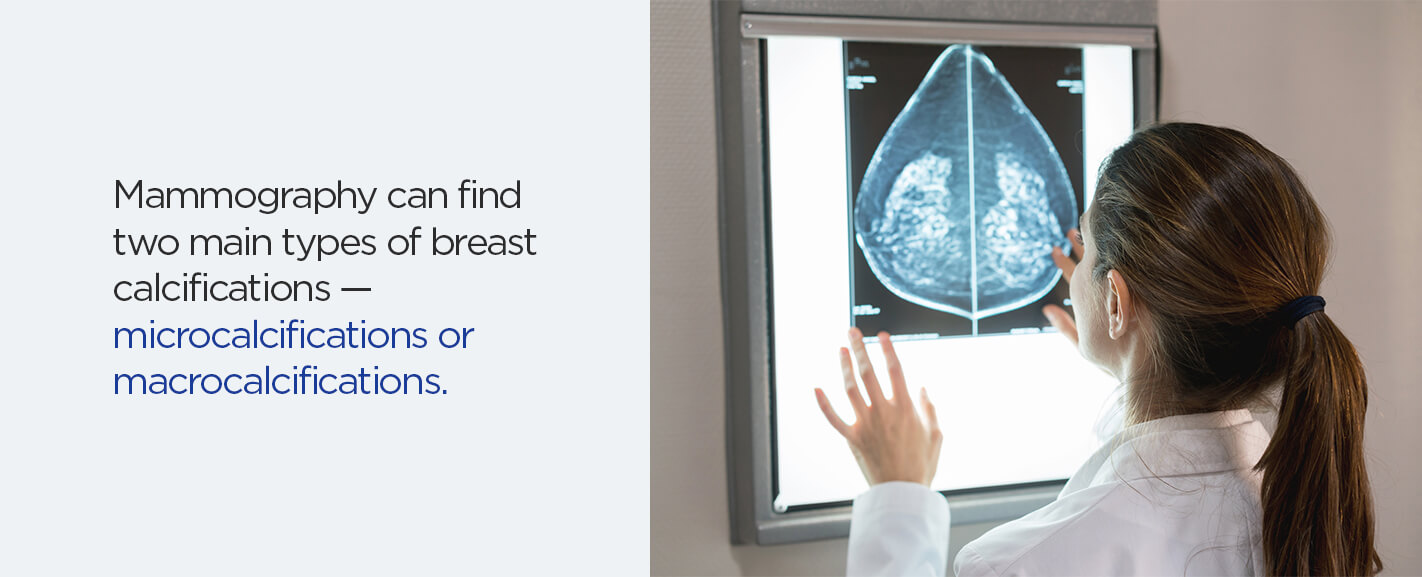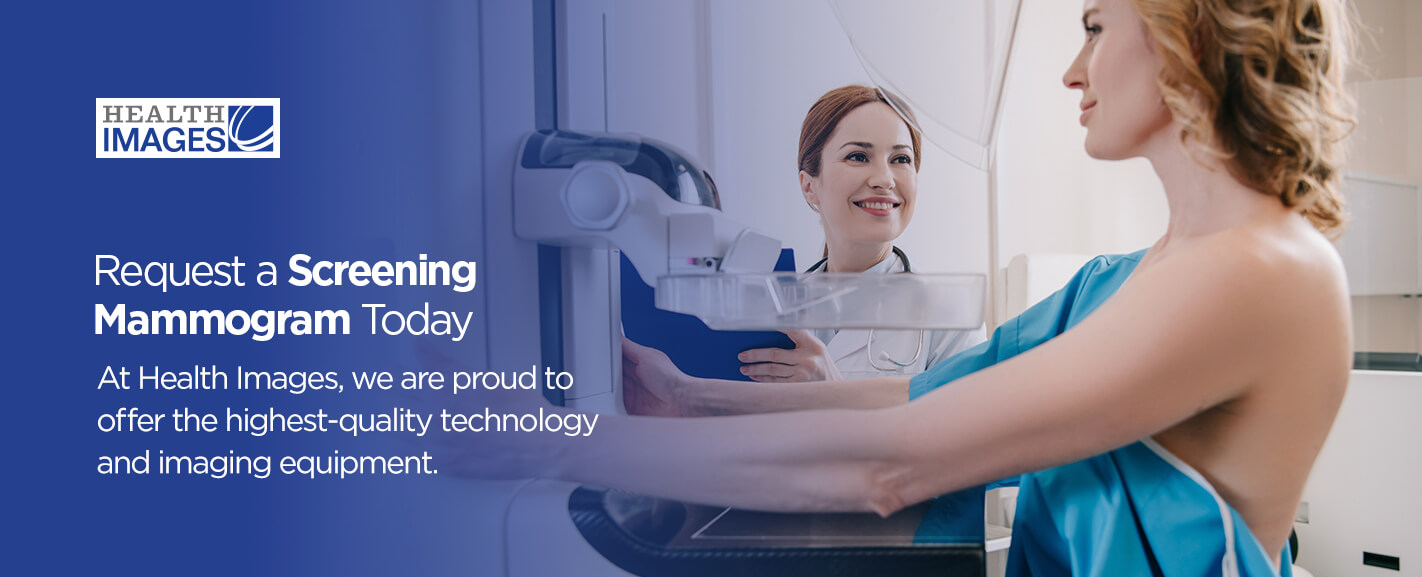What Do Spots on a Mammogram Mean?

When you get a mammogram, your technologist and your doctor will look at the images, noting any spots or abnormalities. It’s typical for small white spots to appear on a mammogram, and these spots aren’t always a reason for alarm. While trying to read your mammogram results might be confusing or anxiety-inducing, spots on a mammogram result are often normal. Learning more about what these spots are, what they mean and what causes them can help put your fears at ease. Let’s take a closer look at what causes these white spots, and what you should know about them.
Reasons White Spots Could Appear on a Mammogram
It’s routine for white spots to appear on a mammogram report, and these spots can signify various causes. While there is a slight chance some of these white spots can indicate a concern for cancer or precancerous cells, the good news is that the vast majority are completely harmless.
Most women will have some white spots on their mammogram images, and because they are so often harmless, your technologist or doctor may not even bring up the issue. So, what are these white spots on a mammogram? Most of them are typical calcifications in the breast tissue. A mammogram image may show one or two white spots, or even too many to count.
These white spots, or calcifications, are different from cysts and lumps in the breast, and you won’t be able to feel them. They are tiny deposits of calcium in the breast tissue and can appear in different sizes and formations on a mammogram image.
Types of Calcifications
Mammography can find two main types of breast calcifications — microcalcifications or macrocalcifications. Both types show up as white spots on a mammogram image, and sometimes indicate cancer or precancerous cells, but they’re mostly benign. However, there are some differences in how they appear in the imaging, and the causes and indications of each. Here’s what you need to know about the types of breast calcifications.
- Microcalcifications: As you might guess from the name, microcalcifications are generally tiny calcium deposits in the breast tissue. This type of calcification often appears as small specks, perhaps looking like sprinkles of salt on the image. Microcalcifications can be slightly more concerning than macrocalcifications on a mammogram. However, they don’t necessarily always indicate the presence of cancerous cells. The technologist or doctor reading the images will look for specific shapes, patterns and layouts of the microcalcifications to determine if further testing is necessary. They will also note these shapes and their patterns to compare them with future screenings. Any changes present will help the technologist or doctor understand the likelihood of cancerous or precancerous cells. Most calcifications of this type don’t need a biopsy or further testing. However, some microcalcification distributions may be more suspicious, and a doctor might recommend a biopsy.
- Macrocalcifications: The other type of calcification is macrocalcifications, and this type generally means a larger calcium deposit in the breast tissue. On a mammogram image, a macrocalcification will look like a larger white spot, or may even appear as a dash shape. And even though these calcifications are more substantial, they are generally less worrisome as an indicator of cancer risk. Almost all macrocalcifications are noncancerous and will not require a biopsy or any further testing. A macrocalcification spot on a mammogram is more common with age, and can relate to aging arteries, breast tissue injuries, inflammation or other causes.
Possible Causes of Breast Calcifications
A wide range of factors can cause breast calcifications, many of which are harmless. Here are some of the most common causes of calcifications or white spots on a mammogram.
- Cancer: While most breast calcifications do not indicate cancer, a small percentage do. Some patterns are more concerning, and health care providers should note them for further screening.
- Past cancer treatment: Sometimes, the radiation from cancer treatment can lead to new calcifications and white spots in the breast tissue.
- Cysts: Pockets of fluid or cysts in the breast tissue can also lead to calcifications and are almost always benign.
- Previous injuries: Any injuries that may have damaged the breast tissue can later show as calcifications on a mammogram.
- Breast surgeries: Previous surgeries — whether for breast cancer, cosmetic purposes or any other reason — can cause calcifications to develop.
- Cell secretions and other debris: Secretions and other substances from cells in the breast tissue may contain calcium salts that can lead to white spots on the mammogram images.
Other less common causes of breast calcifications can also include:
- Ductal carcinoma in situ
- Fibroadenoma
- Mammary duct ectasia
- Calcifications in the skin
- Calcifications in the blood vessels
It’s also essential to note that some beauty and skin care products can also cause white spots on a mammogram. These can include deodorants, antiperspirants, lotions, creams and powders. These products don’t cause calcifications, but can show up in the mammogram imagery as white spots if freshly applied. Because of this, most mammography centers will instruct patients to arrive with clean skin and to not use any of these products immediately before their appointment for more accurate mammogram results.
What to Do If You Have Breast Calcifications
If you have breast calcifications, you won’t know about them until a mammogram detects them. Your technologist or doctor can determine if the calcifications on your mammogram are benign or whether they warrant further testing. Your doctor will discuss what the spots on your mammogram likely mean, and will go over your options with you. If you have any questions about your mammogram, reach out to your care provider.
Request a Screening Mammogram Today
If you’re ready to request your screening mammogram and you live in the Denver area, Health Images has many convenient locations near you. At Health Images, we are proud to offer the highest-quality technology and imaging equipment, as well as highly trained technologists so you get the best experience and the most accurate results. You’ll also find superior patient care with our compassionate staff members, all in a comfortable environment that makes the whole process a breeze. Contact us today to request a screening mammogram appointment.





